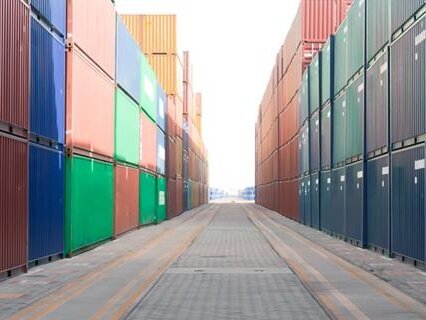Terminal safety: mitigating collision risks in port and terminal operations
TT Club recently hosted a webinar focusing on important terminal risks, particularly those related to collisions in port and terminal operational zones. The session was moderated by Mike Yarwood, Managing Director of Loss Prevention at TT Club, and featured presentations from Laurence Jones, Risk Assessment Director at TT Club, and Evert Bulcke, CEO at Rombit.
The webinar addressed various types of collisions that occur in terminals, including vehicle-to-vehicle, vehicle-to-property, and vehicle-to-pedestrian incidents. These collisions can result in costly damage to equipment and property, as well as serious bodily injury claims due to the weight of handling equipment used in port and terminal operations.
TT Club claims analysis
Laurence Jones presented insights from TT Club's claims data analysis, revealing the most prevalent risks in the port and terminal sector. The data showed that 37% of bodily injury claim costs over the past five years (2018-2022) were from single-person incidents such as slips, trips, and falls. Truck and vehicle incidents accounted for 27% of costs, followed by lift trucks at 9%.
Key findings from the claims analysis included:
- 50% of bodily injuries are caused by mobile equipment and vehicles
- Collisions with other vehicles and pedestrians account for 93% of the cost of truck and vehicle claims
- Collisions with pedestrians and other vehicles account for 89% of the cost of lift truck claims
- Quay crane incidents causing bodily injuries were predominantly (85%) from collisions
- Straddle carrier collisions account for 61% of related bodily injury costs, with overturning at 39%
- For yard cranes, weight/twist lock issues account for 39% of incidents, stack collisions 29%, and gantry collisions 21%
Jones emphasised repeatedly that minimising pedestrians and vehicles in terminal areas is crucial for preventing accidents and injuries.
Risk mitigation strategies
Jones outlined several training procedures and technologies that can help prevent collisions and injuries:
Training and procedures:
- Implementing one-way traffic flows
- Limiting vehicles and pedestrians in the yard
- Establishing site induction procedures for external truck drivers and visitors
- Creating safe equipment areas for truckers to secure and unsecure loads
- Implementing equipment driver training using simulators
- Setting and enforcing speed limits
Technologies:
- Proximity systems for pedestrians and mobile equipment
- Anti-collision sensors on mobile equipment
- Review cameras on lift trucks
- Automating main gates and yard cranes
- Automated twist lock removal and replacement under quay cranes
- Optical character recognition cameras on quay cranes
Digital solutions for safety
Evert Bulcke presented Rombit's technology solutions focusing on improving safety through data-driven approaches. He introduced the Digital Drive Coach, a solution that continuously monitors driver behaviour and provides real-time feedback on unsafe practices such as harsh turning, accelerating too hard, or decelerating too hard.
The system consists of two main components:
- An "anchor" - a sensor box with accelerometers, gyroscopes, and communication capabilities
- A driver box interface for notifications and driver authentication
Bulcke also discussed add-on technologies such as real-time collision avoidance systems that provide two-way alerts to both drivers and pedestrians using ultra-wideband technology and wearable devices.
Data-driven results
Rombit shared impressive data from customer implementations:
- 80% improvement in safety levels regarding dangerous turning events
- Ability to identify infrastructure issues like potholes that cause impacts
- Decrease in equipment damage and maintenance costs
- 20% decrease in energy consumption
- 70% decline in non-economical driving events
Bulcke emphasised that continuous coaching is essential, as data showed that when monitoring was paused, unsafe behaviour immediately increased. He also highlighted that there is a positive relationship between safety and work speed, contradicting the common assumption that careful driving reduces productivity.
An unexpected finding was that forklift utilisation across customers averaged only 14% of productive time, suggesting opportunities for equipment optimisation.
Conclusion
Both speakers emphasised that safety and operational efficiency are linked, with safer operations typically being more productive. Laurence Jones urged terminals to invest in available technologies, noting that over 80% of accidents could be prevented if these technologies were used. Evert Bulcke reinforced that safe driving is also efficient driving, which reduces maintenance costs and emissions.
The webinar concluded with information about the upcoming TT Club Safety Village, a collaborative initiative with ICHCA International that will be hosted at TOC Europe in Rotterdam in June.
- Author
- TT Club Loss Prevention
- Date
- 30/03/2023





